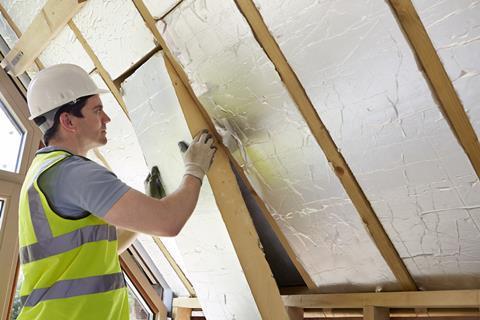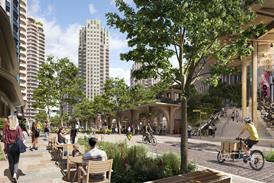From tackling climate change to lowering bills, boomers are uniquely positioned to lead the charge on retrofitting Britain’s ageing housing stock – but government support is essential to unlock their full potential

The National Retrofit Hub estimates that, to meet our climate targets, 14.3 million homes in the UK need to be retrofitted by 2035 to bring them up to EPC C. Energy costs are creeping up again, and the effects of climate change are now evident even on our small island.
With housing contributing around 20% of the country’s emissions, retrofitting the existing housing stock presents a significant opportunity to reduce the UK’s emissions. Improving our current stock will also positively impact health and wellbeing, reduce bills, decrease our reliance on gas, and safeguard our existing stock for future generations.
Retrofit is a major opportunity to combat both the housing crisis and the climate crisis, yet, until now, our government has not shown signs of taking the retrofit of our existing housing stock seriously. With some clear policy decisions that will back up Keir Starmer’s bold COP29 ambitions, the government could start a retrofit revolution that will support their housing ambitions, send a clear message on prioritising the environment and support the nations’ health and wellbeing.
So, onto the boomers. This generation, having witnessed the emergence of climate change, often wants to do the right thing by the planet. Over half of them owned their own homes by the age of 30, and they generally have higher levels of disposable income. They are in a position to invest in improving their homes – not only for personal comfort but also to reduce their environmental impact and pass something resilient on to the next generation.
We frequently hear boomers express a desire to remain in their current homes rather than relocate. They value both the social ties they’ve built and the sense of stability their properties provide. Many are eager to adopt energy-efficient upgrades such as better insulation, renewable energy systems like solar panels, and low-carbon heating solutions like heat pumps. However, they are frequently frustrated by bureaucratic obstacles that make these renovations far more complex and expensive than they could be.
Planning application delays, outdated council policies, and the punitive expense of VAT on refurbishment are among the primary challenges that deter homeowners from investing in retrofit. Even when homeowners want to take action, these systemic barriers often slow or halt progress, leaving our ageing housing stock stuck in an energy-inefficient past.
Bureaucratic challenges
One of the primary obstacles in retrofit is the complex and often slow-moving planning process. Local authorities frequently lag behind in updating policies to reflect contemporary thinking on sustainability.
Inconsistency between local authorities further complicates matters. While some councils are forward-thinking, incentivising retrofit, others are still operating under outdated frameworks, prioritising aesthetic preservation over environmental performance. This patchwork approach leads to uncertainty for architects, homeowners, and developers alike, hindering the pace of change.

For example, recently Islington Council requested that we remove triple glazing from an application, stating a preference for double-glazed units. On the same project, we were also put through an onerous and costly process to have the installation of a simple heat pump approved.
While national policy frameworks like the Future Homes Standard aim to increase the supply and improve the energy efficiency of new builds, they often fail to adequately address the needs of retrofitting existing structures.
Given the severity of the climate crisis – which is projected into our homes every evening through apocalyptic scenes on the news – shouldn’t sustainable upgrades to your home be streamlined and encouraged by the government? Isn’t it time that improving the energy efficiency of your home became permitted development, allowing many to avoid the onerous planning process entirely?
At Collective Works our clients broadly fall into two camps. One is well-versed and passionate about sustainability but struggles to know which measures will have the most impact. The others are primarily looking to improve the layout and size of their home and see fabric upgrades as an unnecessary expense. This group is simply not familiar with the positive impact these measures can have or the grants available to help implement them. I’m an experienced professional, but it’s easy to empathise with both groups.
A retrofit can be costly, and the terminology around grants is often confusing. Schemes implemented by successive governments change name, their offering, and to whom they are available almost as often as the housing minister changes. And even with Rachel Reeves’ budgetary boost for the Boiler Upgrade Scheme, there are doubts that the money will go far enough. If I – a specialist – find it confusing, then what hope does the general public have? If we are to roll out retrofit on the scale that’s needed, it has to be made more attractive and accessible.
Political challenge
The concept of retrofit has been around for a while now, and I am not the first to question why it’s not yet mainstream. Recent studies by the National Energy Foundation (NEF) and the Sustainable Development Foundation have estimated a £15,000 increase in market value for properties that include energy efficiency measures. While this is a positive trend, it’s barely enough to cover the costs of the work and demonstrates that, as a nation, we’re not yet valuing high-performing homes.
Bringing the VAT rating on retrofit in line with new builds – or ideally swapping them – would be a step in the right direction. There have been numerous calls from industry bodies and sustainability advocates to either reduce or eliminate VAT on retrofit works, as is the case in other European countries, but these have yet to result in any substantial policy change.
Incentives to move away from gas and to reduce domestic energy use – measures to lower the running costs of heat pumps – could be mandated in energy price legislation.
This misalignment between the urgency of environmental action and the slow pace of policy change is stifling innovation. Architects, developers, and homeowners often find themselves navigating a regulatory environment that is not fit for purpose when it comes to achieving ambitious sustainability goals.
In the confusing (and often alarming) climate crisis landscape, surely we should be making it as simple as possible for people to make sustainable choices. As a generation, boomers have the capital to make energy-efficient improvements to their homes, the time to research solutions, and the desire to make change.
The will is there, but the government – through policy, tax breaks, and targeted investment – needs to go further in supporting them to find a way.
Postscript
Joe Scragg is an architect with Collective Works. He studied at the Centre for Alternative Technology.
















1 Readers' comment